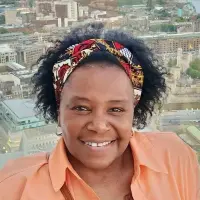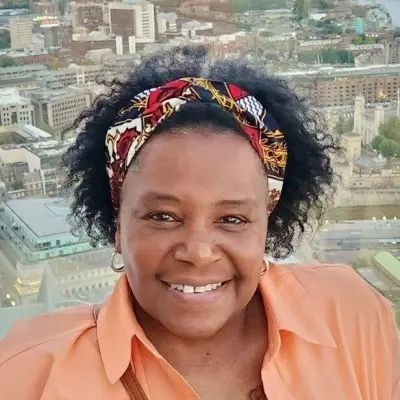In late 2016, the media coverage surrounding the Dakota Access Pipeline brought much-needed attention to the challenges faced by indigenous communities across North America. There have been triumphs for Native American rights and work is being done to achieve accurate representation of indigenous populations. But despite this, the importance of learning about aboriginal cultures has never been clearer.
Finding out about the indigenous peoples of the country now known as Canada is a fascinating process. The groups who originally inhabited the land have a long history, with unique traditions and a unique place in modern-day Canadian culture. Luckily, there are plenty of brilliant opportunities to learn more about the original settlers on your holiday in Canada. Here is a little bit of background information to get you started, so you can make the most of your trip and understand all the intricacies of Canada’s complex past.
Understanding Canada’s Aboriginal peoples

The First Nations people are the largest group of aboriginal peoples in Canada, made up of 634 recognised bands across the country. Canada is also the homeland of the Inuit, who live in the Arctic areas, and the Métis people, a distinct group that grew from the multicultural interactions of the Europeans and the First Nations people. The Métis people comprise around 30% of today’s Aboriginal population.
These various indigenous groups have lived in Canada for thousands of years. Whilst written historical records only go back so far as the arrival of European colonists in the late 15th century, First Nations oral traditions stretch back centuries further. Several oral texts accurately describe events such as the Cascadia Earthquake of 1700 and the 18th century Tseax Cone eruption. Today, the most accurate descriptions of the First Nations’ history comes from the stories of the tribal elders and their descendants.
Many of the Aboriginal people of North America did not (and some still do not) recognise the national borders of the United States and Canada that were later imposed by Europeans. Groups lived and moved across the border, and many reservations of the present day stretch across them, too. The Blackfoot Reservation on the border between Montana and Alberta is one such. However, historians now generally group the early First Nations by the six main geographic areas of Canada as it is today:
- The Woodland First Nations lived in the boreal forest of eastern Canada
- The Iroquoian First Nations lived in the fertile lands of southern Canada
- The Plains First Nations inhabited the prairies
- The Plateau First Nations resided across the semi-desert areas in the high mountains to the forests of the north
- The Pacific Coast First Nations lived along the west coast of Canada
- The First Nations of the Mackenzie and Yukon River Basins inhabited dark forests and swamp-like land known as muskeg
However, within these geographical groups there were various First Nations, or tribes, with distinct identities that members cherish. For example, the Blackfoot, Sioux, Mohawk, Chipewyan and Pacheenaht are all different groups in Canada today.
Living with the land
Before the arrival of the Europeans, the First Nations lived in harmony with the land. As Indigenous and Northern Affairs Canada explains, they were able to “satisfy all of their material and spiritual needs through the resources of the natural world around them.” Through an attentive understanding of the natural world they lived in, each of the First Nations developed ingenious ways to overcome the challenges of what were often harsh environments.
Find out more at the Petroglyphs Provincial Park in Ontario. Here you can see the largest known collection of aboriginal rock carvings in Canada at a sacred site known as ‘The Teaching Rocks’.
What did the original First Nations eat?
They hunted and gathered plants for food and medicinal purposes, with each group maintaining a different diet based on what was accessible in the area. For example, the Woodland First Nations hunted game animals with spears and bows and arrows, along with traps and snares. The Plains First Nations, however, fostered a sophisticated buffalo hunting culture, whereas the First Nations of the Plateau and Pacific Coast fished for salmon and other seafood.
During the winter, some First Nations of the Mackenzie and Yukon River Basins stored their frozen meat inside trees. Their trunks were peeled of bark to keep the food safely out of the reach of animals like wolverines. Many groups dried large amounts of meat, fish and berries to preserve them for use during the winter.
Find out more at the Royal Saskatchewan Museum’s Seasonal Round exhibit. Here you can learn about the different food local First Nations people ate in each season, from bison and caribou to fish and berries.
Not all First Nations lived in tipis…
The changing environment and the migratory cycles of wildlife meant that certain groups such as the First Nations of the Woodland, Plains and Mackenzie and Yukon River Basins maintained a nomadic way of life. They built homes that were easy to transport or were quickly crafted out of materials available in the environment. The Plains First Nations’ tipis were made of pine tree poles with around 12 buffalo hides stitched together with intricate inner walls to provide ventilation and prevent draughts.
However, other First Nations such as the Haudenosaunee lived in permanent villages. These were built around a dome-shaped longhouse made of poles covered in slabs of bark, which stood at up to 10 metres wide, 10 metres high and 25 metres long. First Nations along the Pacific Coast had access to huge red cedar forests. This allowed them to hone their carpentry skills and create huge, multi-family homes using chisels made of stone or shell. The Coast Salish people built some of the largest of these cedar longhouses, which could be an impressive 170 metres long and 20 metres wide. These structures couldn’t be further from the tipi stereotype, and their technology far predates the techniques of later settlers.
Find out more at the ‘Ksan Historical Village and Museum in BC. Immerse yourself in a typical ‘Ksan household, exploring hunting utensils, ceremonial masks, button blankets and more.
From canoes to snowshoes: historic transport
Lovers of snowshoeing should thank Canada’s First Nations when they next trek across the powder. What is now a popular sport was created by indigenous people as an essential form of winter transport. The original snowshoes were made of a wooden frame with rawhide webbing, and allowed otherwise-impenetrable terrain to be traversed. In fact, different First Nations created numerous ways to transport themselves and their belongings. The Woodland First Nations hand-crafted birch bark canoes to be light, durable and streamlined for navigating the rivers and lakes of their home. The Haida’s dugout canoes could be up to 16 metres long, holding 40 people on-board.
Find out more at the Haida Heritage Centre in BC. Learn about how the traditional Haida dugout canoes were made in their Canoe House and watch local artists work with ancient techniques in the Carving House.
What did First Nations people originally wear?
The common conception that First Nations people originally wore animal skins is correct – for the most part. Most groups made tunics, leggings and moccasins out of the tanned skins of available animals – the Woodland and Northern First Nations used moose, deer or caribou, whereas the Plains First Nations used lighter skins such as buffalo, antelope, elk and deer. To preserve animal hides for clothing, women used a smoke tanning process, and sewed garments with sinew and used fine bones as needles. Most groups wore furs in the winter for added warmth, but the men from the Pacific Coast First Nations largely went without clothes. The women would wear items such as skirts woven with shredded cedar bark, and in the rain the people along the coast used rain capes made out of woven bark and wide-brimmed hats fashioned from spruce roots. Whilst primarily functional, these clothes were carefully decorated, such as moccasins embroidered with porcupine quills dyed using ink derived from flowers, fruit and berries.
Find out more at the First Peoples Hall at the Canadian Museum of History in Québec. Walk through collections of over 2,000 artefacts and documents, including ceremonial and everyday clothing.
Different social structures in the First Nations
Within each First Nations group, historic, complex social structures existed. For the migratory Woodland First Nations, each group had its own hunting territory, and the leader (usually male) was selected due to his skill in hunting. Iroquoian First Nations, who were farmers, founded permanent communities and developed sophisticated systems of government based on principles of democracy. Village, tribal and confederacy councils discussed issues facing the group.
The Plains First Nations were each led by a chief and fostered military societies with regulated life in camp. Some, such as the Dakelh-ne, had social systems including nobles, commoners and slaves. Each summer, all of the Plains First Nations would assemble for dances, spiritual ceremonies, feasts and communal hunts. The Pacific Coast First Nations were even more stratified, with aristocratic classes bearing their own crests in the form of animal and supernatural representations believed to be their founders, displayed on totem poles.
In stark contrast, the people of the Mackenzie and Yukon River Basins worked closely in family units to survive the severe winters. They chose a group leader based on the task at hand – a skilled hunter would lead caribou hunts, for example.
Find out more at the UBC Museum of Anthropology in Vancouver with archaeological objects featuring everything from traditional masks to contemporary totem poles created by First Nations artists such as Bill Reid and Doug Cranmer.
First Nations spiritual beliefs
Spirituality is an integral feature of First Nations society. Although these beliefs vary among groups, traditionally First Nations peoples believed that their values and life were gifted by an unnamed Creator. Their most important belief was that people should live in harmony with the natural world, which meant that First Nations treated everything they encountered – animal, human or object - with complete respect.
These beliefs were shared among groups through elders leading readings, songs, dances, festivals and spiritual ceremonies. Different groups celebrated occasions such as the annual salmon run, or gave thanks for animals before hunting. The guiding principles of First Nations teachings emphasise respect, bravery, honesty, humility and truth as values that enable people to live a balanced life in harmony with everything in creation.
Find out more at the Thunder Bay Art Gallery in Ontario to see how the spiritual beliefs of the local First Nations people influence aboriginal artists to this day.
The coming of the Europeans
In the 1500s, Europeans began to travel to Canada to make settlements after hearing about the bounty of natural resources in North America. Each summer, groups from Spain, Portugal, France, England and other areas came to Canada. Quickly establishing an informal trade with the local First Nations peoples, they exchanged European items for furs. What began as a friendly association began to sour as the Europeans formed colonies and tried to expand their power with the growing fur industry.
Throughout the 16th and 17th century, conflict between the new Europeans and the First Nations was common until, in 1701, France and 40 First Nations signed the Great Peace treaty, promising to sharing the land of Canada as “a dish with two spoons”. However, following the American War and the establishment of the United States in 1783, First Nations groups began to be dispossessed of their ancestral land as British colonists from the U.S. emigrated to Canada. By the 1830s, only small areas of First Nations land remained in northern Canada. In the 1820s, colonial administrators began attempting to (in their eyes) ‘civilise’ the First Nations, assimilating them into European lifestyles. The ‘Indian Act’ of 1876 saw colonial federal governments control Indian lands, resources, money and various other areas, moving groups onto reservations.
It was not until 1946 that the Senate and House of Commons reviewed Canada’s policies and management of First Nations affairs, revealing the negative impact of former assimilation policies. Throughout the ’60s, conditions on reservations began to improve and, in the 1970s, the Comprehensive Claims Policy was set up to settle land claims, which has been adapted in response to Aboriginal concerns ever since. Between 1977 and 1987, various conferences were held to adapt the Canadian Constitution to reinstate equality and fair treatment to the First Nations people. Bill C-31 in 1985 removed discriminatory provisions from the ‘Indian Act’, and in 1995, the government launched the Inherent Right Policy to allow Aboriginal groups to return to self-government.
Descendants of the Europeans were beginning to understand the difficulties that the previous generations had put the First Nations people through, and respected the autonomy and rights of the country’s first inhabitants. Soon, June 21st was declared National Aboriginal Day. Since then, various efforts have been made to promote opportunities and rights for all of Canada’s aboriginal peoples. For example, a landmark moment occurred in 2007 when the Government announced a compensation package for survivors of former residential schools which had attempted to quell aboriginal cultures, heritage and languages. The compensation was worth nearly $2 billion and marked a new area of peaceful co-existence between the central government of Canada and its First Nations peoples.
Find out more at the Squamish Lil’wat Cultural Centre in Whistler. See a national archival photo exhibit that tells the story of the residential schools and the impact they have had on Canadian aboriginal peoples.
Canada’s First Nations today
Many aspects of First Nations peoples’ lives have changed dramatically over the centuries, meaning that some of their original practices aren’t commonly used today. However, it is incorrect to speak of the Canadian First Nations in the past tense. Around 1.5 million people today identify themselves as having an Aboriginal identity, and many of them continue to practice their traditions throughout their lives. The wonderful thing about modern Canada is that people of the First Nations are able to live both with their heritage and in areas formerly considered part of European Canada. First Nations people are in parliament, in films and TV, and are teaching university courses across the country. All while sharing their ancestors’ cultural practices and stories with others. These interactions are one of the most fascinating elements of any trip to Canada, whether it is at a museum, an art installation or out in the great Canadian wilderness.
Today, Canada is the most multicultural country in the world - a title it is incredibly proud of, and which is largely due to the country’s Aboriginal history. As Indigenous and Northern Affairs Canada explains, “the Government of Canada is working in partnership with First Nations in this new era of reconciliation to build stronger First Nations communities. All across the country, this crucial collaborative work is taking place in areas as diverse as First Nations economies, education, governance, social services, human rights, culture and the resolution of outstanding land claims.” One of the most effective ways of achieving this is through educating people visiting for holidays to Canada, so that we can all appreciate the incredible legacy of the First Nations peoples of Canada.
Find out more by visiting the Adäka Cultural Festival in Whitehorse from June 20th to July 6th, or the Montreal First Peoples Festival from the 3rd to 10th August, to immerse yourself in films, music, ceremonial dances, presentations and more.
Resources:
http://www.virtualmuseum.ca/virtual-exhibits/type/virtual-exhibits/?show=all
https://www.aadnc-aandc.gc.ca/eng/1307460755710/1307460872523
http://www.thecanadianencyclopedia.ca/en/article/aboriginal-people/
https://www12.statcan.gc.ca/nhs-enm/2011/as-sa/99-011-x/99-011-x2011001-eng.cfm
Featured image credit: Andrea Izzotti (Shutterstock)
Latest Articles
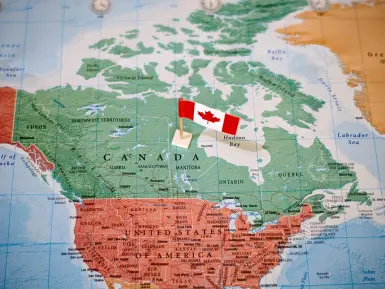
How big is Canada?


03/07/2025
A question that many people ask is ‘how big is Canada’? Most people know Canada is big, but just how big is big?
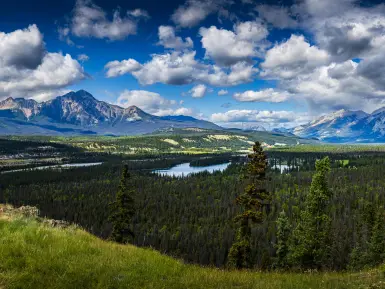
Canada Advocate Q&A: Trish & Cathie's Race Across The World Adventure


01/07/2025
Join us this Canada Day as we celebrate the breathtaking beauty of Canada with Trish & Cathie, the incredible winners of Race Across the World series 3! Discover Canada through the inspiring lens of two adventurers who truly fell in love with its majestic landscapes and vibrant culture.
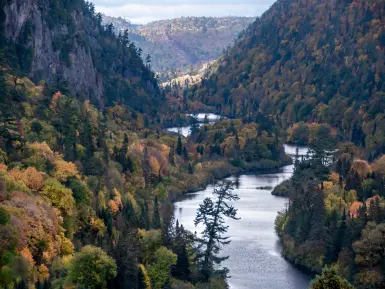
Sault Ste. Marie Travel Guide: Undiscovered Canada


30/06/2025
Sault Ste. Marie in Canada is one of Ontario’s premier adventure towns, known for its rugged lakes, mountains, and world-class outdoor activities.
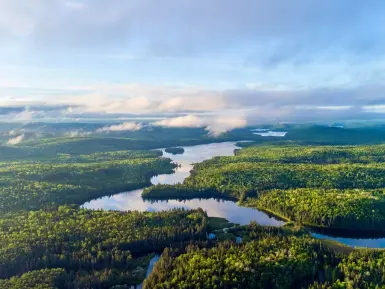
Algonquin Park Travel Guide: Iconic Canada


25/06/2025
Algonquin Provincial Park is one of Canada’s most spectacular wilderness regions. The park, which is Ontario’s oldest and largest provincial park, is filled with rocky ridges, fragrant maples and thousands of lakes.











